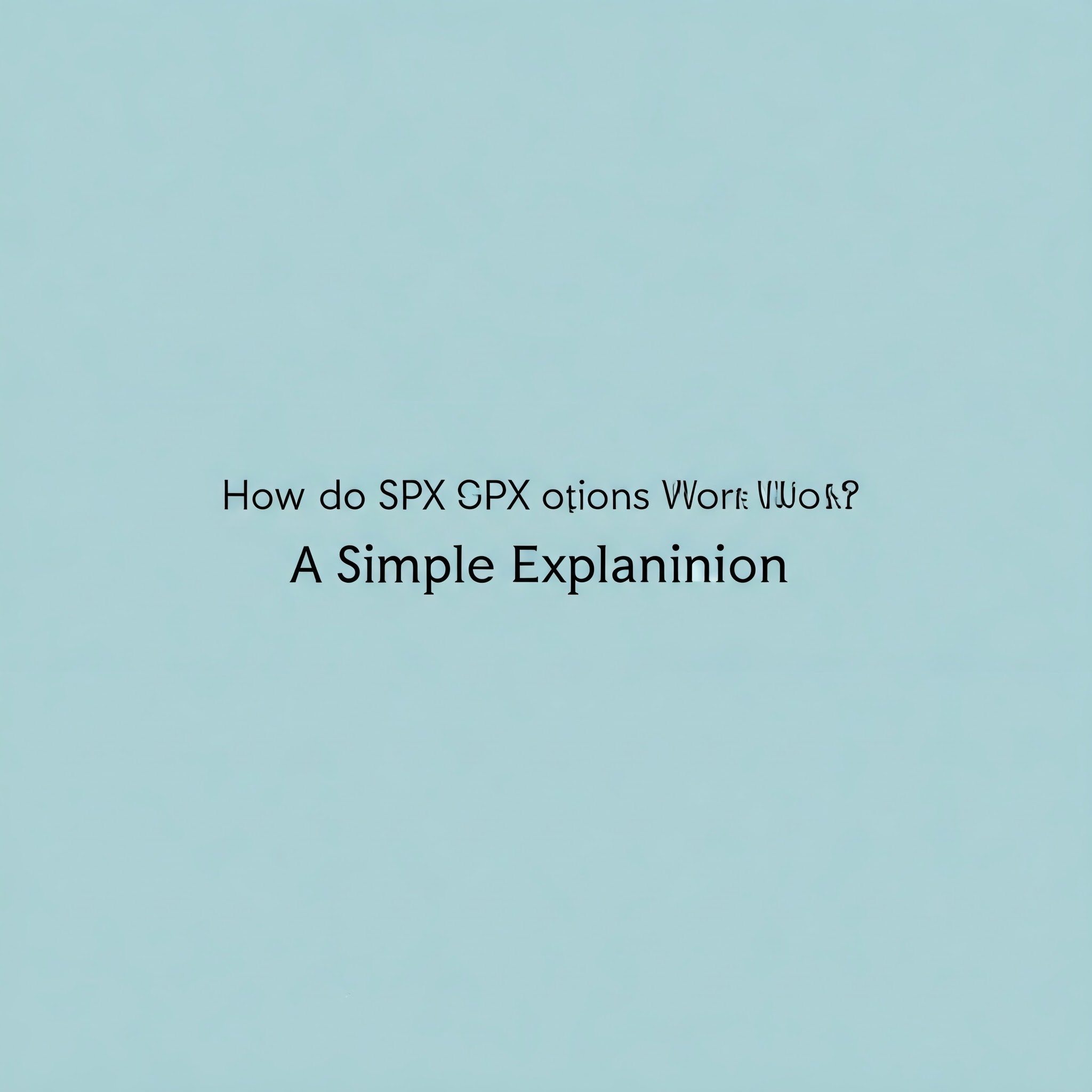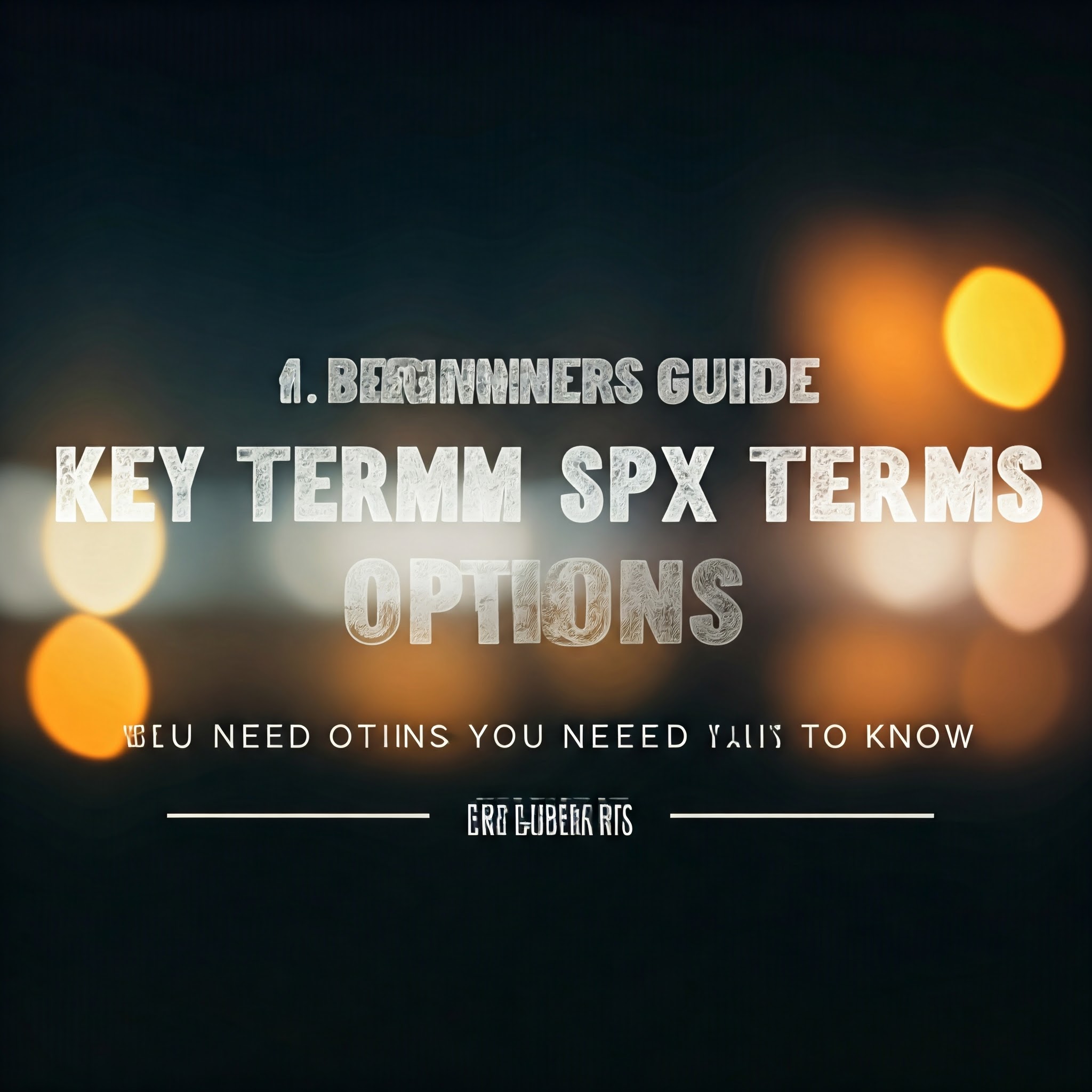Introduction
SPX options are one of the most popular financial instruments in the world of trading, offering unique opportunities for investors and traders alike. But what exactly are SPX options, and how do they work? If you’re new to the world of options trading, this guide will provide you with a comprehensive understanding of SPX options, their benefits, risks, and how you can get started.
What Are SPX Options?
SPX options are financial derivatives based on the S&P 500 Index, one of the most widely followed stock market indices in the world. The S&P 500 Index represents the performance of 500 of the largest publicly traded companies in the United States. SPX options allow traders to speculate on the future direction of the index or hedge their existing portfolios without directly owning the underlying stocks.
Unlike stock options, which are based on individual companies, SPX options are index options. This means they derive their value from the performance of the entire S&P 500 Index rather than a single stock.
Key Features of SPX Options
- European-Style Options: SPX options are European-style, meaning they can only be exercised at expiration, not before. This reduces the risk of early assignment.
- Cash Settlement: SPX options are cash-settled, meaning no physical delivery of stocks occurs. Instead, the profit or loss is settled in cash.
- Broad Market Exposure: Since SPX options are based on the S&P 500 Index, they provide exposure to a wide range of sectors and industries.
- High Liquidity: SPX options are highly liquid, making it easier for traders to enter and exit positions.
How Do SPX Options Work?
SPX options come in two main types: calls and puts.
- Call Options: A call option gives the buyer the right, but not the obligation, to buy the S&P 500 Index at a specific price (strike price) before the expiration date. Traders buy call options when they expect the index to rise.
- Put Options: A put option gives the buyer the right, but not the obligation, to sell the S&P 500 Index at a specific price before the expiration date. Traders buy put options when they expect the index to fall.
The value of an SPX option is influenced by several factors, including the current price of the S&P 500 Index, the strike price, time to expiration, and market volatility.
Why Trade SPX Options?
- Diversification: SPX options provide exposure to a broad market index, reducing the risk associated with individual stocks.
- Hedging: Traders can use SPX options to protect their portfolios against market downturns.
- Leverage: Options allow traders to control a large position with a relatively small investment.
- Flexibility: SPX options can be used in a variety of strategies, from simple directional bets to complex spreads.
Risks of Trading SPX Options
While SPX options offer many benefits, they also come with risks:
- Volatility: The S&P 500 Index can be highly volatile, leading to significant price swings.
- Time Decay: Options lose value as they approach expiration, especially if the underlying index doesn’t move in the desired direction.
- Complexity: Options trading can be complex and requires a solid understanding of the market.
- Potential for Losses: Traders can lose their entire investment if the market moves against their position.
How to Get Started with SPX Options
- Educate Yourself: Before trading SPX options, it’s essential to understand how they work. Read books, take courses, and practice with paper trading.
- Choose a Broker: Select a broker that offers SPX options trading and provides the tools and resources you need.
- Develop a Strategy: Decide whether you want to trade calls, puts, or more complex strategies like spreads or straddles.
- Start Small: Begin with a small investment to minimize risk while you gain experience.
- Monitor the Market: Keep an eye on the S&P 500 Index and other market indicators that can impact your trades.
Popular SPX Options Strategies
- Long Call: Buy a call option if you expect the S&P 500 Index to rise.
- Long Put: Buy a put option if you expect the S&P 500 Index to fall.
- Covered Call: Sell a call option against an existing position to generate income.
- Protective Put: Buy a put option to hedge against a potential decline in your portfolio.
- Iron Condor: Use a combination of calls and puts to profit from low volatility.
Tips for Success in SPX Options Trading
- Stay Informed: Keep up with market news and economic events that can impact the S&P 500 Index.
- Manage Risk: Use stop-loss orders and position sizing to limit potential losses.
- Be Patient: Options trading requires patience and discipline. Avoid making impulsive decisions.
- Practice: Use a demo account to practice your strategies before trading with real money.
- Learn from Mistakes: Analyze your trades to identify what worked and what didn’t.
Conclusion
SPX options are a powerful tool for traders and investors looking to gain exposure to the S&P 500 Index, hedge their portfolios, or speculate on market movements. While they offer many benefits, they also come with risks that require careful consideration. By educating yourself, developing a solid strategy, and managing risk, you can successfully navigate the world of SPX options trading.
Whether you’re a beginner or an experienced trader, SPX options provide a unique opportunity to participate in the financial markets. Start small, stay informed, and continuously refine your skills to maximize your chances of success.
Key Terms in SPX Options You Need to Know: A Beginner’s Guide
The Difference Between SPX Options and Other Options A Detailed Comparison




